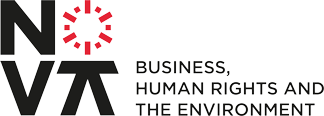About the author: Marijke Mulder is working for FEMNET since 2018. She holds an M.A. in Literature, but I has been working – and burning – for issues of political education for many years. She is the coordinator of the various educational and advisory projects that FEMNET carries out. This includes working with students but also advising municipalities and companies on purchasing sustainable workwear.
FEMNET e.V. is a German womens‘ rights organization based in Bonn. The NGO raises awareness for working conditions in the textile industry of the Global South with campaigns and educational programs. FEMNET calls on brands to respect human rights in their entire value chains and lobbies for effective laws to ensure corporate social responsibility. FEMNET also supports women in production countries who are fighting for their rights, through a legal aid fund and projects against gender-based violence and improvement on psychological and physiological well-being.
Textiles are everywhere – and they are a problem. But by purchasing workwear, merchandise and other consumer textiles, companies and municipalities can have a powerful and positive impact on the textile industry.
Textiles often serve as a prime example of problematic supply chains: since the collapse of the Rana Plaza textile factory on 24 April 2013, it became evident that garments are usually produced under inhumane conditions. Low wages, forced overtime and lack of employee participation are the norm in many factories. Textiles are also a critical product from an ecological point of view. Only a few weeks ago, the European Environment Agency published a paper according to which European textile consumption is the fourth most harmful to the climate, and textiles even occupy third place on the negative list in terms of land and water use.
In view of these figures, the issue of sustainability plays a central role in textile procurement. This is true in the private sector, and for companies and the public sector in particular. Because whoever buys has an influence on the market. And whoever buys a lot also has a lot of influence. Through the quantities of textiles bought to equip employees, for beds in hospitals and hotels or even as merchandise, companies and the public sector can really make a difference. And this has already happened. The increased demand for sustainably produced textiles has also increased the supply in recent years – certainly as part of a social changes that extend beyond the topic of textiles. Every year, around 1.05 billion euros are spent in Germany on workwear alone[1].If most of that money were to flow into products that are produced as sustainably as possible, this would have a positive impact along the entire supply chain and help to combat the deplorable social and ecological conditions.
The industry and the market have yet to be fully ready for it. Nevertheless, sustainability criteria can be considered when selecting products.
In procurement law, textiles are classified as sensitive products. In other words, products for which the chances of human rights violations in the supply chain are particularly high. The EU Directive on Public Procurement adopted in 2014. explicitly encourages contracting authorities to include environmental and social aspects in the quality criteria of the specifications, so that tendering procedures that focus on sustainability can be carried out in a legally secure manner.
In the private sector, implementation is even easier, as companies are only bound by their own rules when concluding contracts. Sustainability is increasingly crucial for consumers’ purchasing decisions. And even if textiles are not the product of a company, but belong to the area of indirect procurement, they can contribute to a socially and ecologically responsible profile. A credible sustainability strategy considers all economic sectors of a company.
For the introduction of sustainable textiles, you need to know which textiles are purchased and who purchases them. This sounds banal, but it is by no means always centrally listed. It is important to get an overview to be able to plan the next steps efficiently. Create a catalogue of required and existing textiles (if not already available) and check to what extent the current products already meet sustainability standards. Check whether there have already been efforts made at an earlier stage, and whether they have been successful or have failed. Identify the relevant stakeholders to be involved in the process. In companies, for example, this could be the procurement department, human resources (procurement of classic uniforms), health & safety (protective workwear), marketing (merchandise), CSR and the management. In municipalities, the city council, the top management and the heads of departments should be considered. In both contexts, we also recommend involving staff and employees and communicating the purchasing motives in order to achieve support for the new textiles.
Regarding the implementation, we recommend to start with a pilot product on which sustainable criteria can be tested and the offer of the market can be examined. Choose a comparatively “simple” textile to start with, so that a motivating sense of achievement can easily be reached. A look at the list of practical examples in the Sustainability Compass (https://www.kompass-nachhaltigkeit.de/praxisbeispiele) can serve as an initial orientation. You can also get help – FEMNET and the Global Nature Fund provide a comprehensive range of consulting. For municial tenders, you can also contact FEMNET.
As a next step, a market research helps to formulate requirements. After all, the highest standards are useless if there are no products (yet) that meet them. (Despite the encouraging developments in the market, sustainable textiles unfortunately remain a niche product). An essential part of sustainable procurement, which is closely linked to market research, is also dealing with verification options. The range of sustainability standards or labels is large and initially confusing, but essential. This is because the standards differ in the level of their requirements, content (environment, labour rights, health), their degrees of coverage (the steps of the supply chain that the label covers). Since you do not have the possibility to inform yourself about the production conditions in the production sites along the supply chain, you are dependent on standards.
The Sustainability Compass, the online service Siegelklarheit and the exchange with your suppliers offer assistance in market research and in dealing with standards. This way you can also get an overview of proof and evidence available complying with the standards. At the same time, you can make your suppliers aware of the changing procurement guidelines. FEMNET and the GNF have also edited various publications that classify and evaluate labels.
Sustainability is an additional component of the many requirements that textiles must meet. It would be mendacious to say that it does not involve extra effort. But choosing sustainable sourcing also means consciously investing tax and corporate money in protecting the environment and human rights and making the global economy a little fairer.
[1] BTE Handelsverband Textilien (2019): Statistik-Report 2019. Textileinzelhandel
(Translation: S. Kaldonek, FEMNET)
Suggested citation: M. Mulder, ‘Textiles can also be sustainable’, Nova Centre on Business, Human Rights and the Environment Blog, 28th June 2022.
Latest Posts
Categories
- Annual Conference on Business; Human Rights and Sustainability
- Blogging on B&HR: Towards an EU CSDDD
- Business and Human Rights Developments at the European Level
- Business and Human Rights Developments in Central and Eastern Europe
- Business and Human Rights Developments in Southern Europe
- Business and Human Rights in Conflict
- Business and Human Rights in the World
- Corporate Sustainability Due Diligence Directive
- Exploring new frontiers in the updated OECD Guidelines
- Latest Business and Human Rights Developments
- National Contact Points for Responsible Business Conduct: the road ahead for achieving effective remedies
- Notícias sobre Empresas e Direitos Humanos
- Second Annual Conference on Business; Human Rights and Sustainability
- Serie de blogs “Explorando los caminos hacia el acceso efectivo a la justicia en materia de empresas y derechos humanos”
- Short-Termism in Business Law: A Global Approach
- Sustainability Talks
- Young Voices and Fresh Perspectives

